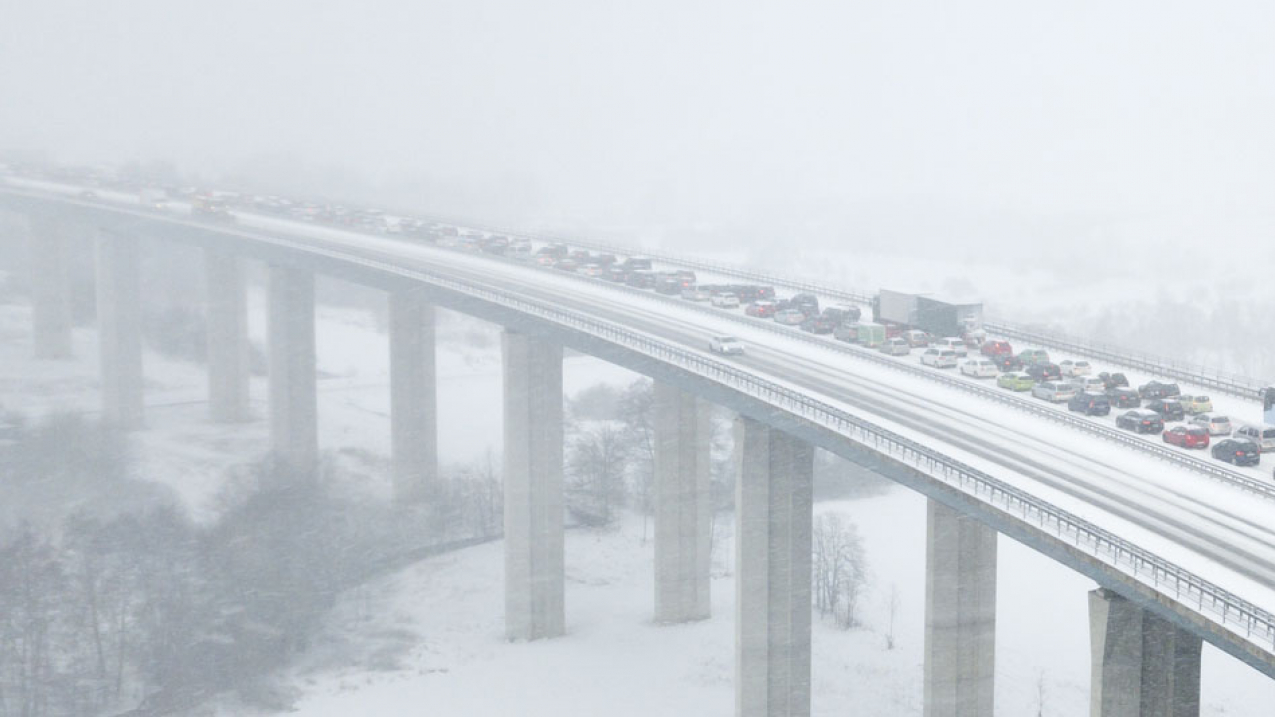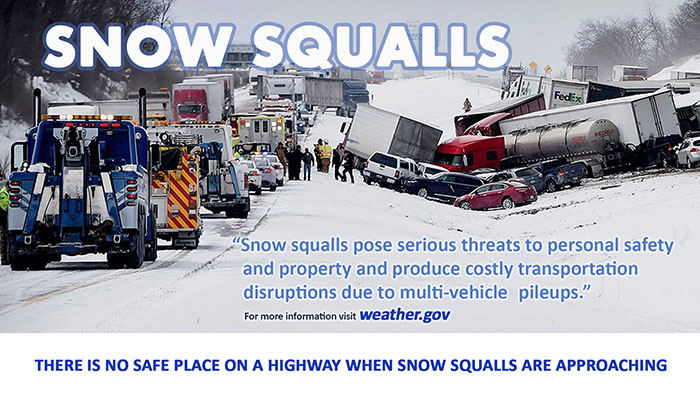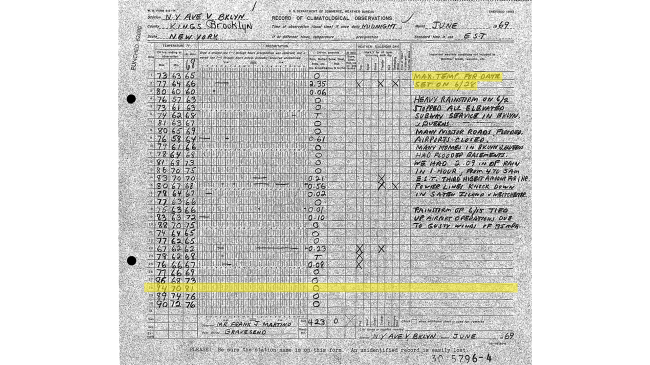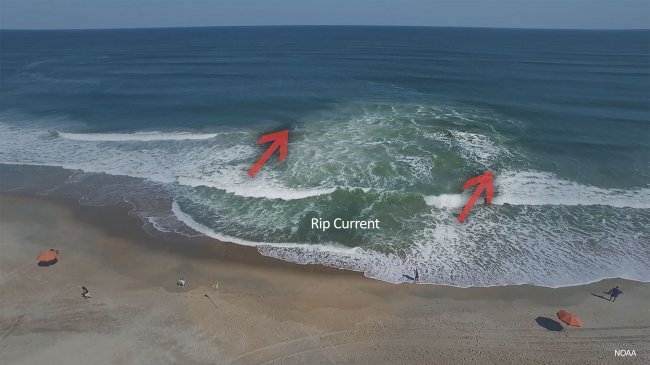Alerts aimed at reducing vehicle crashes and road fatalities
Imagine driving down a busy highway in winter: The weather is clear and you are going the speed limit.
Suddenly, traffic is enveloped by white-out conditions with little to no visibility and strong, gusty winds. As you slow down, you see a chain-reaction of vehicles swerving, colliding into each other in the distance like amusement park bumper cars.

Highway bridge during a heavy snowfall. (Image credit: iStock)





